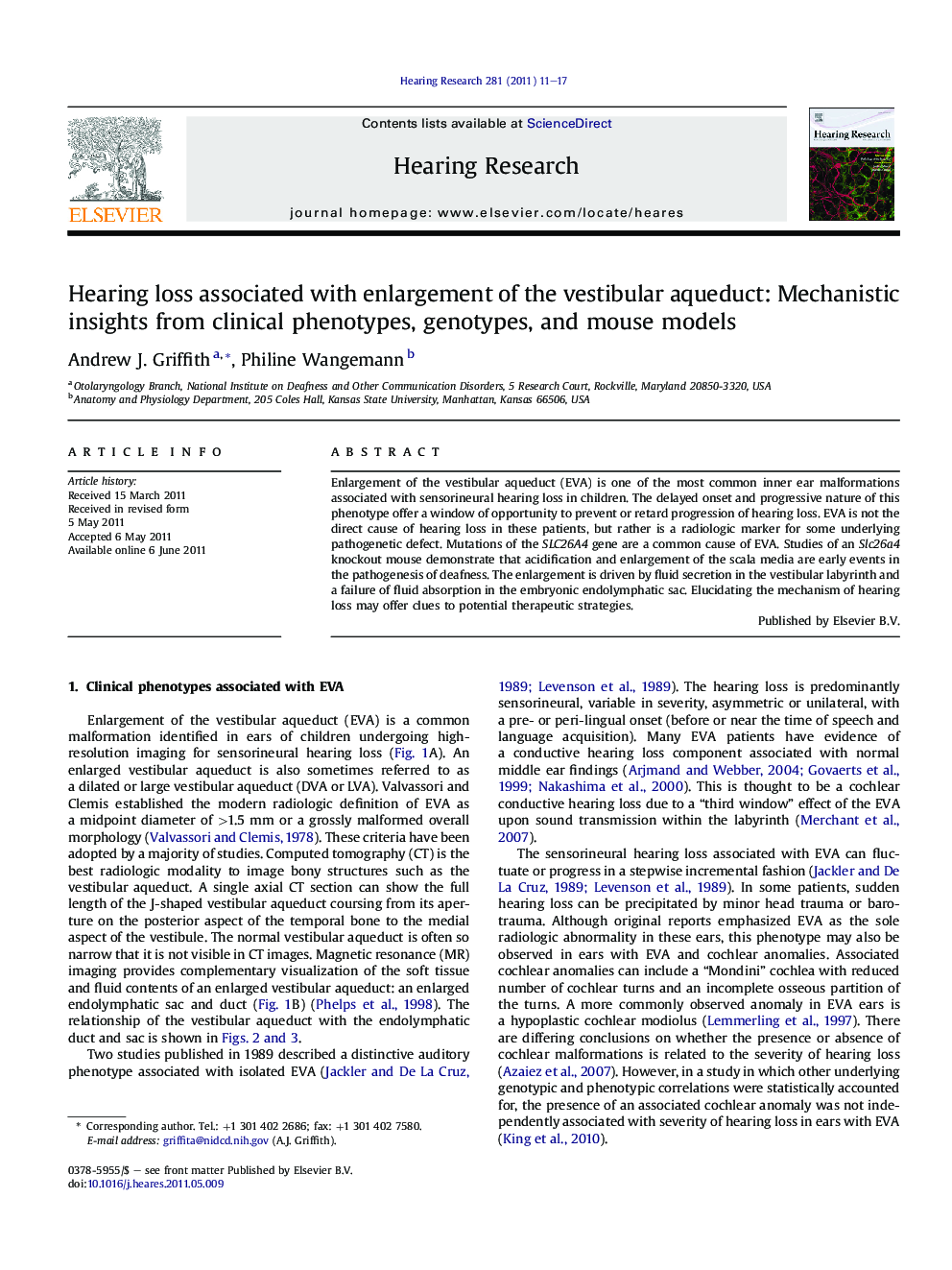| کد مقاله | کد نشریه | سال انتشار | مقاله انگلیسی | نسخه تمام متن |
|---|---|---|---|---|
| 4355374 | 1615619 | 2011 | 7 صفحه PDF | دانلود رایگان |

Enlargement of the vestibular aqueduct (EVA) is one of the most common inner ear malformations associated with sensorineural hearing loss in children. The delayed onset and progressive nature of this phenotype offer a window of opportunity to prevent or retard progression of hearing loss. EVA is not the direct cause of hearing loss in these patients, but rather is a radiologic marker for some underlying pathogenetic defect. Mutations of the SLC26A4 gene are a common cause of EVA. Studies of an Slc26a4 knockout mouse demonstrate that acidification and enlargement of the scala media are early events in the pathogenesis of deafness. The enlargement is driven by fluid secretion in the vestibular labyrinth and a failure of fluid absorption in the embryonic endolymphatic sac. Elucidating the mechanism of hearing loss may offer clues to potential therapeutic strategies.
► Enlargement of the vestibular aqueduct (EVA) is associated with hearing loss.
► Natural history of EVA-associated deafness is amenable to therapeutic interventions.
► Mutations of the SLC26A4 gene are a common cause of EVA.
► Slc26a4-deficient mice have endolymphatic enlargement and acidification.
► Slc26a4-deficient mice are deaf with loss of the endocochlear potential.
Journal: Hearing Research - Volume 281, Issues 1–2, November 2011, Pages 11–17